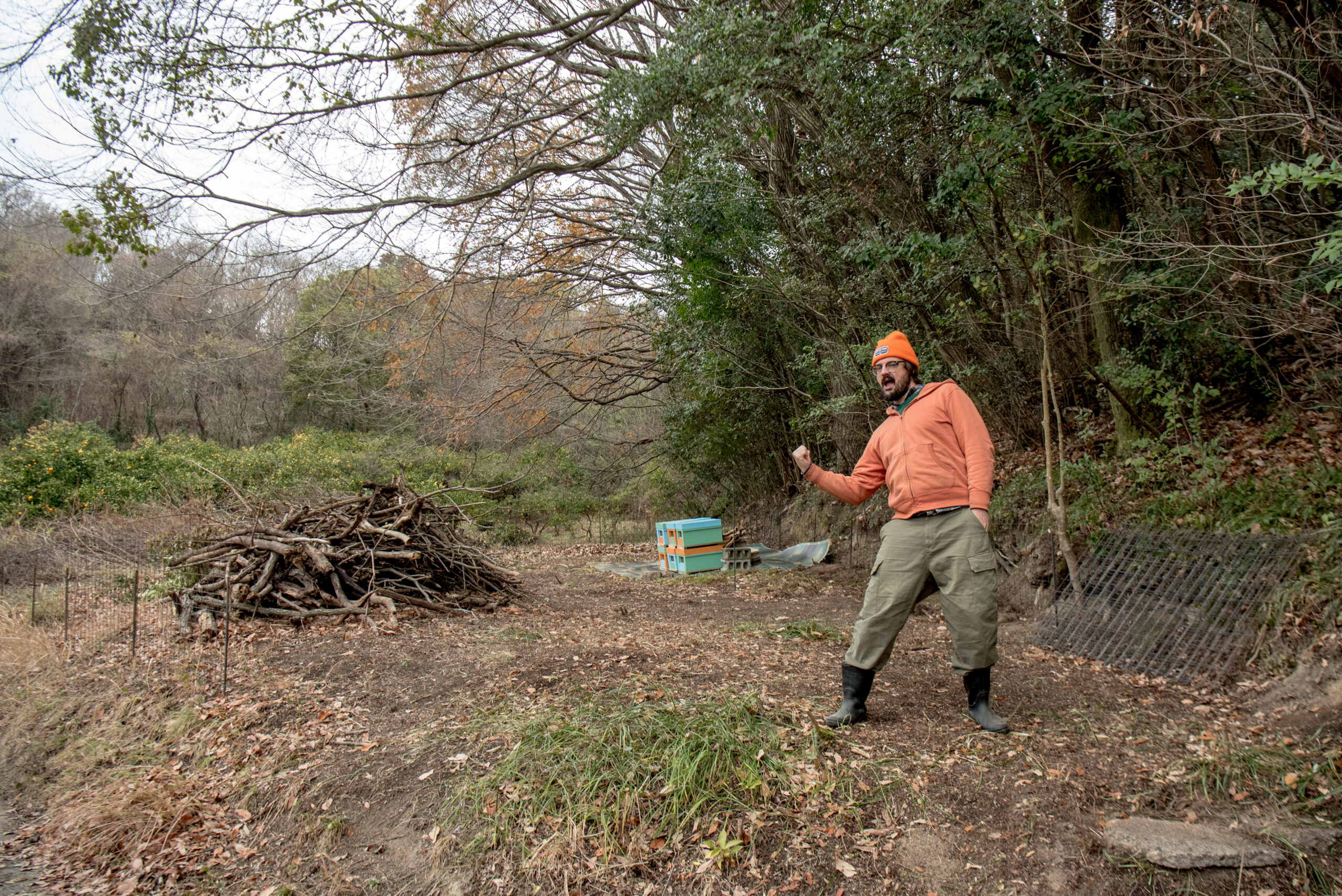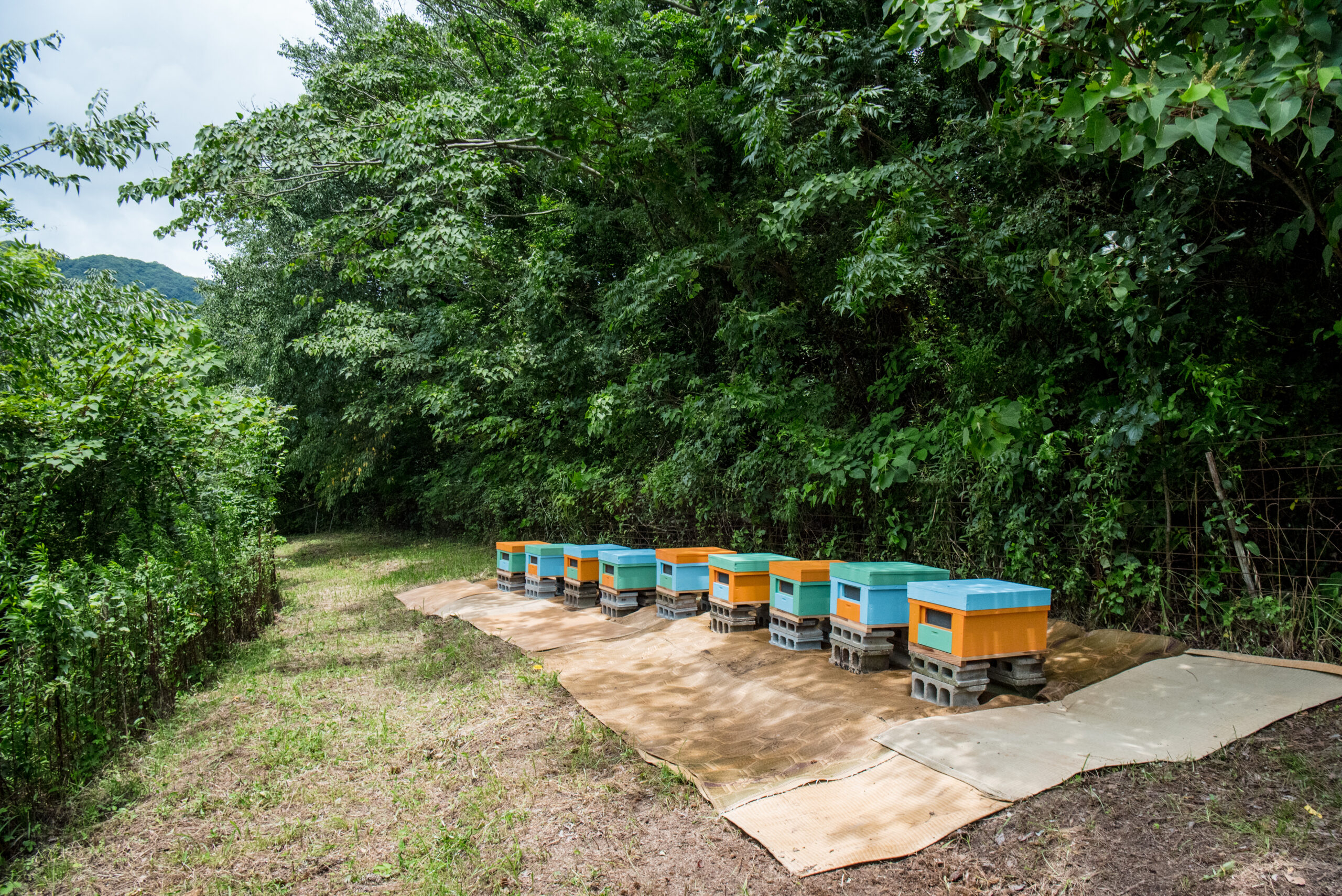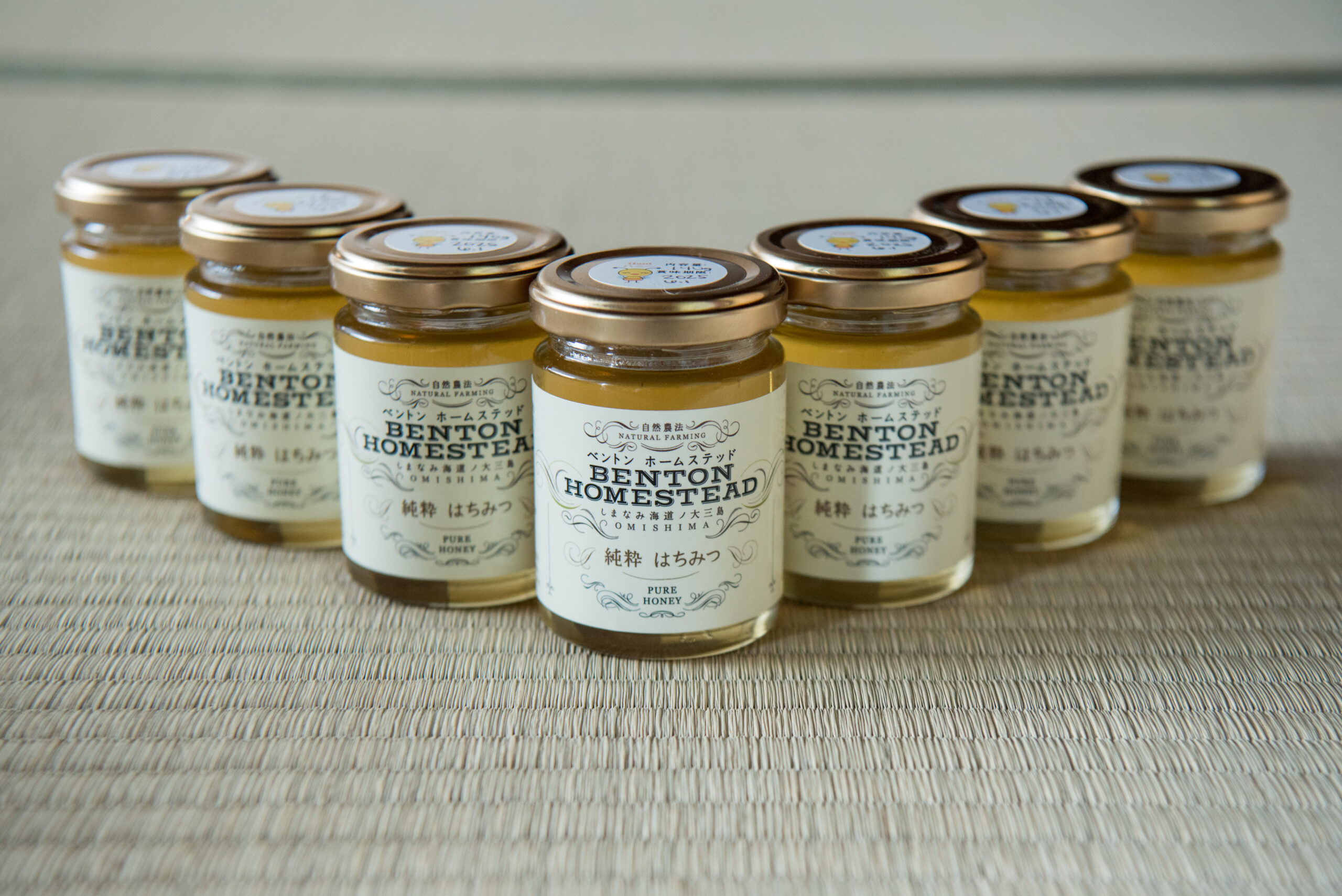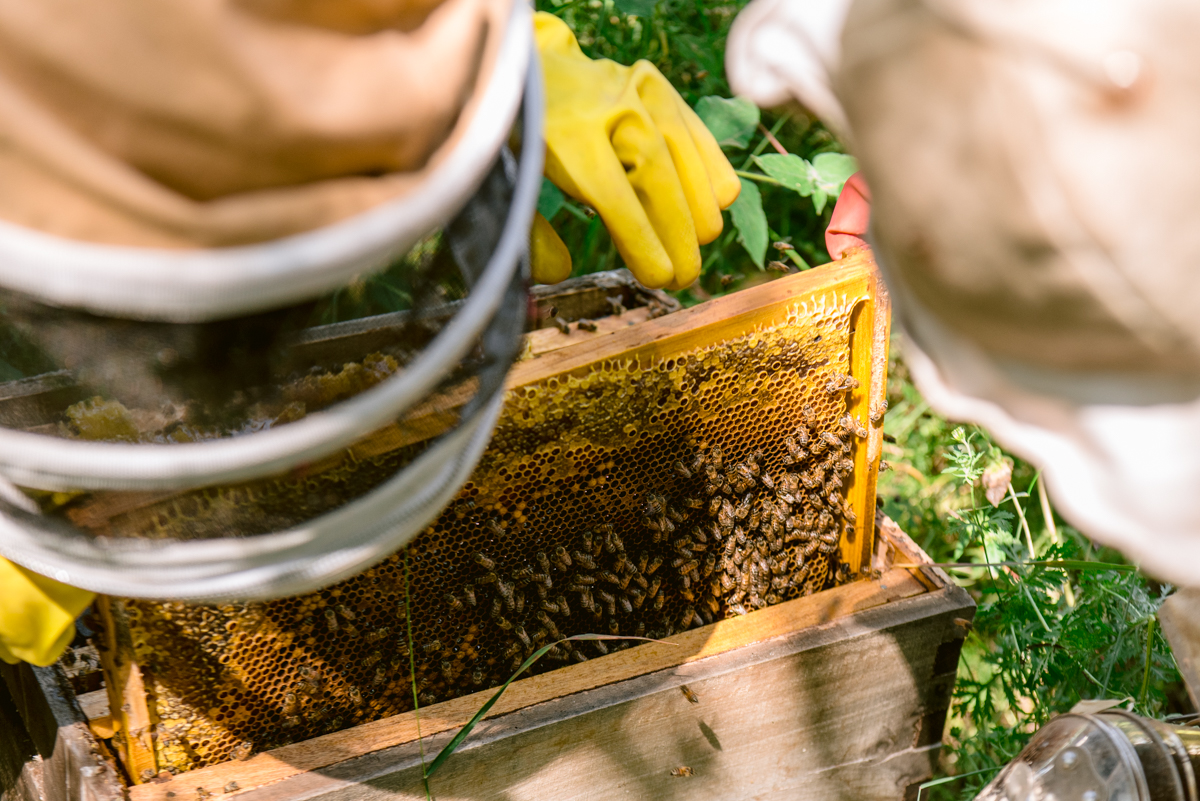Hello again, friends! After receiving our 1-year Business Manager visa extension, the day after Christmas, we took some time to rest and really start planning our strategy for the next year. We hope to accomplish many things this year, and will work very hard to achieve our goals. But most importantly: we need our little business to achieve a certain level of success in the next eleven months, so we can earn our visa extension again next year. The true test will be how this first year unfolds! I truly believe, if we can prove ourselves this first year, subsequent extensions will be much more simple.
So… let’s get to work!!!
Honeybee Apiary #2
This little triangular piece of land was included in the purchase of our second akiya, the former ‘ryokan’ inn. It’s a very short distance, and sits at the base of the mountain that’s home to Ōmishima’s ‘Idahachiman Jinja’ shrine.
The small parcel has been abandoned for decades, but is mostly covered with grasses, vining weeds, large fallen branches from the trees above, old piles of branches and wood, plus years and years of leaves. These are my pictures of the abandoned land, before we started restoration:





This parcel is a perfect location for honeybees, for many reasons:
- There’s only one neighbor: a citrus orchard. They’re a very nice couple who have many similar interests, and are happy to have new pollinators for neighbors!
- It’s situated a half-mile away from the nearest honeybee apiary. That beekeeper has given his permission for us to keep hives here.
- Despite not having any trees, it’s categorized as forest land, so there are few restrictions for how the land is used.
- It gets partial sun and partial shade, which means it’s not the best spot for growing crops. Instead, we’ll fill the land with nearly year-round nectar sources, and plant them in the sun and shade accordingly.
Fortunately, winters here are relatively dry and mild, so even though it’s only January, we’ve gotten some great progress completed already! Since we will only have a certain number of bee hives this first year, we decided to save some time and energy, by only clearing and prepping half the parcel at this time. In just a few work days, we were able to clear half the land and install a wild boar fence! As we get ready to expand the apiary (later this year, or early next year), we can expand the fenced area accordingly.
At the time I’m writing this blog, we still have work to do at Honeybee Apiary #2. But our honeybees are being babysat by a local beekeeper until it’s safe to move them in March, so we still have some time to prepare. Next, we’ll build a driveway for kei-truck access, build a gate to complete the wild boar protection, trim as many of the large overhanging branches as we can, level the ground and place natural weed barrier where the hives will be, then lastly, install the hives, and welcome our honeybees.
Our YouTube video shows the first steps in restoring the abandoned land, and installing wild boar fence ⌄
A short little YouTube video showing how to plant container potatoes using only ‘found materials’ ⌄
Honeybee Apiary #1
You may remember from our previous blog post, that the first piece of land we started prepping was Honeybee Apiary #1. Our plans for this leased parcel had to change a bit. But! We’re able to be flexible, so we still have exciting plans for this land. Moving forward, we’ll have the maximum allowed three honeybee hives at this location, grow some crops, and fill much of the space with Japanese honeybee hives!
Native Japanese bees will be a learning experience, as they use a different shape of hive boxes altogether, and have different characteristics. But they’re unregulated, so there’s no maximum number of Japanese honeybee colonies we can maintain, besides the obvious limitations of colony health and ecosystem.

Various Other Parcels
Like many farms in Japan, our cultivation areas will consist of a patchwork of small fields scattered around a small area. This is because villages in Japan are often situated so the houses are clustered together in one area, with all the farm plots situated on the outer edges. This allows for a stronger sense of community with your neighbors (because all the houses are close together), and also for a cooperative effort when it comes time to plant and harvest (because all the farmland is close together).
Since arriving on Ōmishima, we’ve had many offers of abandoned land to use. These parcels are clearly less desirable due to the amount of work it will take to get the weeds and grasses under control, as they’ve been abandoned for some time. We narrowed down our decision to two parcels: The larger field will be our main plot for “market gardening”, which means we’ll be focusing on growing plants with a short grow length and quick turnover. The smaller field will be mostly devoted to various kinds of hot peppers!




We also have a few other tiny plots scattered around, including two small garden spaces near Benton Guesthouse that our neighbors are letting us use in exchange for maintenance. And, we own one more parcel that is currently overgrown with small trees, which we plan to use for our future chicken flock. Evan finally got a chainsaw…!
Our YouTube video introducing the first five fields we’ll be restoring… from abandoned to abundant! ⌄
Another YouTube video showcasing only ‘found materials’: free, natural, non-plastic, compostable sheet mulch! ⌄
Speaking of honeybees and chickens, this seems like a good time to formally introduce Benton Homestead’s ‘chyara’ mascots! Please welcome Hani (ハニ) and Chiki-chan (チキちゃん).

As always, thanks for reading, and thanks for following along! Our Benton Homestead YouTube channel is currently at 74% of our goal to reach 1,000 subscribers, at which point we’ll be able to start earning a small amount of income from the videos we make for y’all. Each time you like, comment, subscribe, and share our videos, you’re helping us reach that goal! All income will go directly towards our small farm business, and will also help us continue to live and work in Japan. Thank you for helping us to build this little online community!
If you’re a foreigner living in Japan, what sorts of food do you miss? Any veggies you haven’t been able to find locally? Anything you wish you could find grown pesticide-free? We have some flexibility in the kinds of crops that we grow, so we would love to hear from you. Please let us know in the comments!
Thanks for reading,
Dani & Evan Benton





